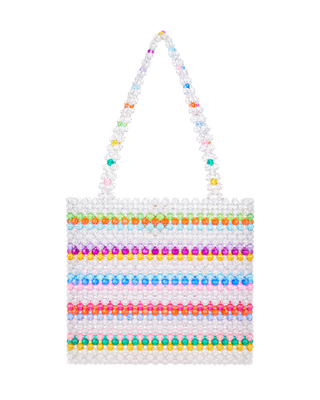
I Inside the Old Year Dying, PJ Harvey’s first proper album release in seven years, comes from a sentiment most of us would rather suppress: feeling as though we’ve lost our sense of direction, wondering if we’ll spend the rest of our life doing the same thing. At what point does one’s craft get old? How does one move forward? In her first music-related interview of the year, Harvey revealed that her long absence was primarily due to feeling uncertain on how to move forward artistically. “I needed to restore myself, but also refresh my imagination,” she said.
After wrapping up her tour for 2016’s The Hope Six Demolition Project, the artist found herself at a crossroads, unsure of whether she would even go on to write another solo record. Hope Six… was a concept album that examined the rocky political landscape of the 2010s, diving deeper into issues raised in 2011’s masterful Let England Shake (which garnered her a second Mercury Prize). “OK, I’ve done this for a long time,” Harvey mused in a press release. “Do I want to carry on for the remainder of my life doing the same thing?”
Instead of focusing on that personal journey back into writing new material, Harvey carved a new path through letting go of the self-doubt. This allowed her to craft a 12-song collection more gradually, leaving ample room for her creative imagination to run free.
Writing poetry, especially her 2022 epic, Orlam, became the blueprint that would guide this album. In fact, the opening track, “Prayer at the Gate,” consists of the poem’s first chapter, sung in the same rural Dorset vernacular she had captured on the page. “Wyman am I worthy?/ Speak your wordle to me,” Harvey sings, with a delicate and vulnerable delivery that contrasts her usual assertive tone.
Compared to her last two projects, I Inside… feels more blissful and serene. Harvey’s vocals remain the focal point of this record, and the dramatic instrumentation rarely overpowers. Produced alongside her frequent collaborators John Parish and Flood, Harvey pieced together the album with a collection of field recordings, incorporating sounds from the forest. On “Autumn Term,” Harvey sings, “Ash trees gave their keys, yet none will set me free,” alluding to feeling creatively stuck amid an eerie soundscape haunted by the sound of distant screams.
Even though I Inside… explores new grounds both sonically and thematically, there’s plenty for longtime fans to love. The title track sounds as though it would fit well with her last two records, and the near-title track, “I Inside the Old I Dying,” features more lyrics representing the process of transformation: “Slip from my childhood skin/ I zing through the forest,” she sings, reiterating how change is necessary in order to move forward.
The album’s closing song, “A Noiseless Noise,” has is full of grit, reminiscent of her loud-quiet-loud songs on Rid of Me with punk undertones. The layer of ambiguity that lies within this project is also what makes it a quintessential PJ Harvey album; only PJH would find a way to connect Christ with Elvis, as she does on “Lwonesome Tonight.”
I Inside the Old Year Dying came from a need for newness, where Harvey presents a refreshing take on the purpose of art outside of its literal meaning. By revisiting Orlam, Harvey managed to give herself a fresh direction, which enabled her to break out of the never-ending cycle that interrupted her creativity. In both her epic poem and new album, Harvey explores the idea of detaching herself from expectations in order to free herself for change. This record transports listeners through an intensely vivid journey, presenting a different side to PJ Harvey’s creative genius, one that proves profound art cannot be forced.
























